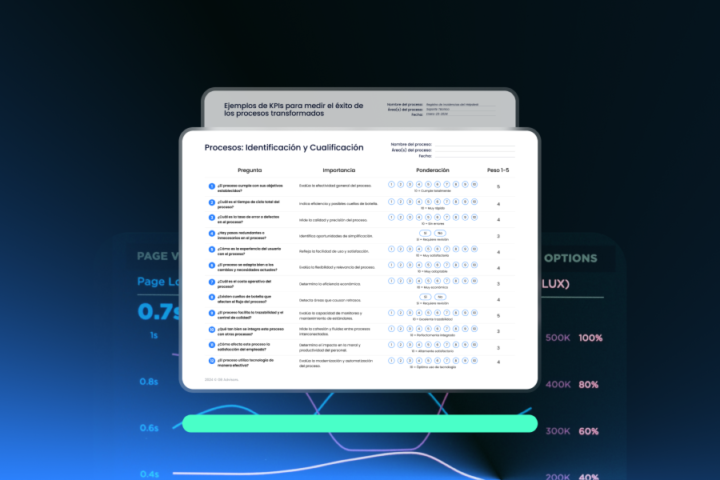
In the beginning, the term web 1.0 did not exist. And the cyberspace was waste and void; and users were nothing but mere spectators: It was the era of unidirectional or static web. At this point, pages were just banners in loud colors that weren’t updated regularly, either. In this scenario, selling digital services and products was reduced to minimum with simple trades with credit cards, with no additional interactions.
In other words, as the interaction was virtually zero with outdated information displayed in unattractive pages, the internaut experimented by first-hand the perfect formula to lose interest. And with each uninterested internaut, a sales opportunity was wasted.
With the passage of time, companies began to notice the potential that Internet offered to increase sales. Thanks to this new approach, companies created another way to promote their digital services and products. Thus, the first pages in cyberspace sent their “Hello, world!”, and this action marked the beginning of the web 2.0.
Later, it arises the idea of search engines for position optimization; and with them, new opportunities to exploit with new sales approaches because they certainly were who topped the list.
Although Internet and companies had already taken the first steps to establish new ways to sell; they still lacked the means to assess in full extent the impact that corporate websites caused on the final customer. And there’s the motivation to create the firsts CRM software tools.
Also, neither business people nor web developers had the slightest idea about the perfect formula to attract prospective buyers; and how to convert or materialize their visits into actual sales. Such idea led to the evolution of the concept of selling in the web 2.0; and later, in the web 3.0. In parallel, it was born the first notion con CRM software to manage the relationship with customers. Let’s get deeper into this interesting topic.
CRM software in the web 2.0 and 3.0

After that primitive time of the Static Web, the web 2.0 emerged at the beginning of this millennium. Pages become more dynamic and allowed interactions with the netizen. Blogs and sites as MySpace with regular updates appeared; soon after wikis and forums joined to the cyberspace; and social networks bursted -especially Facebook- to completely revolutionize the way we now see the world. All these new means and channels give more insight on what customers need and want to buy.
In other words, the Semantic Web emerged and its main command was always been ready so the internaute could always have a mean to give opinions; make questions and even complaining. From this point it become evident the need to use automated tools like CRM software to gather all this information on the same place; and keeping in mind the challenge of giving individualized answers to each customer to encourage the relationship with them.
In parallel, the concepts related to marketing that have direct influence on sales planning; sales customization and enhancing the relationship with customers. So, we find the features of the selling cycle of digital services and products in the web 2.0:
- Include business strategies + CRM software solutions.
- Combine Social Networks + Sales Intelligence to discover new trends that enhance the customer relationship.
On the other hand, CRM software in the web 3.0 contains these additional features:
- Intelligent searches and classification by the user’s
- User-friendliness
- The Cloud
- Data binding
So, what CRM software do you need to engage more customers on the web 3.0?
 With the purpose of making more accessible for you the information that your customers share on the web 3.0, what you first need is to do is choosing a Cloud-based CRM software that enhances your selling cycle.
With the purpose of making more accessible for you the information that your customers share on the web 3.0, what you first need is to do is choosing a Cloud-based CRM software that enhances your selling cycle.
We recommend you to look for these characteristics to choose the right CRM software for your company:
-
Personalization and scalability
CRM software should be integrated to your specific needs, and also, guarantee that they will grow at the same pace as your company does. Make sure your CRM software meets these requirements and avoid surprises. Likewise, it must have a multiplicity of well-differentiated modules, activated on demand.
- Cloud-based
Current demands make this feature indispensable in automated tools. You and your staff require o/offline access to your work tools and for this purpose, Cloud technology is essential.
-
Robust and reliable database
Very little will you achieve with a CRM software that does not meet the demands of storage and accessibility to your data in the web 3.0.
-
Accessibility from any smart device
The Mobile-First trend is here to stay, and your CRM software should meet this requirement to achieve the real demands of your customers.
-
Real-time synchronization
Your sales agents need to use real and reliable data at all times to ensure transparency and consistency with SLA’s.
-
Multitasking and Intuitive
It will be ideal if your CRM software counts with the principles of Business Intelligence and Artificial Intelligence. A good way to attract and engage more customers, is by anticipating their demands; and you can achieve this purpose with intuitive tools that offer you additional optics.
-
Compatible with your Operating Systems
Whether you have or not the most advanced operating systems, it is necessary that your CRM software has the capability of interacting with your platforms without interruptions.
-
Flexible Report Generation
In the same way, your CRM software should provide the information you need to adapt your strategies. For this, flexibility is necessary to design customized reports.
-
Friendliness and rapid deployment
These qualities guarantee you more accurate results, more satisfied sales agents, and happier customers.
-
Constant updates
Both, the manufacturing company and the third-parties must offer some kind of support and constant updating of your CRM software. Then, you need to carefully review these clauses in the fine letter of your contract before signing and acquiring their services.
If despite these advantages you still hesitate on using and exploiting them about the direction to take, you can always consult with experts.
Avoid imitating the example of many companies who, to date, continue to offer their products as if they were still in the Web 1.0; limiting their growth and being the reason why their clients go with their competitors.
We invite you to adopt CRM software to let your customers set the pace for your future: Hear what they have to say about your digital services and products through the advantages that the web 3.0 offers.



